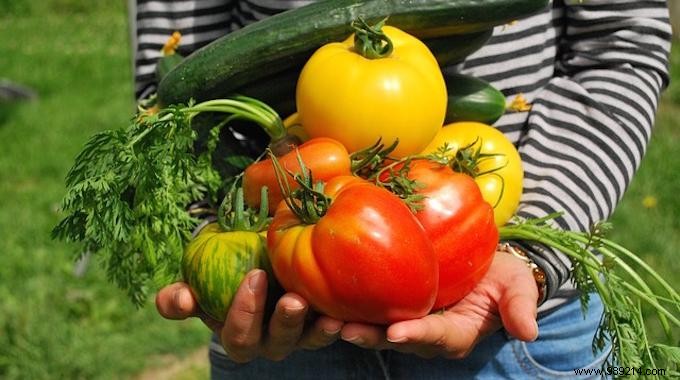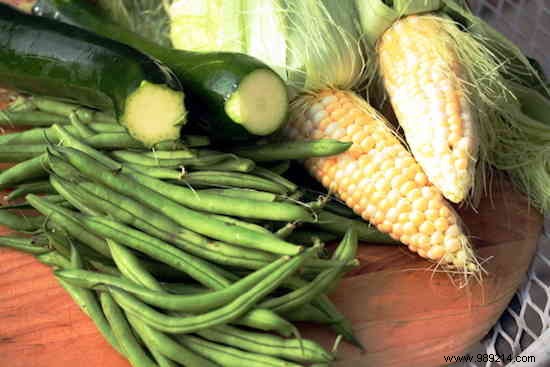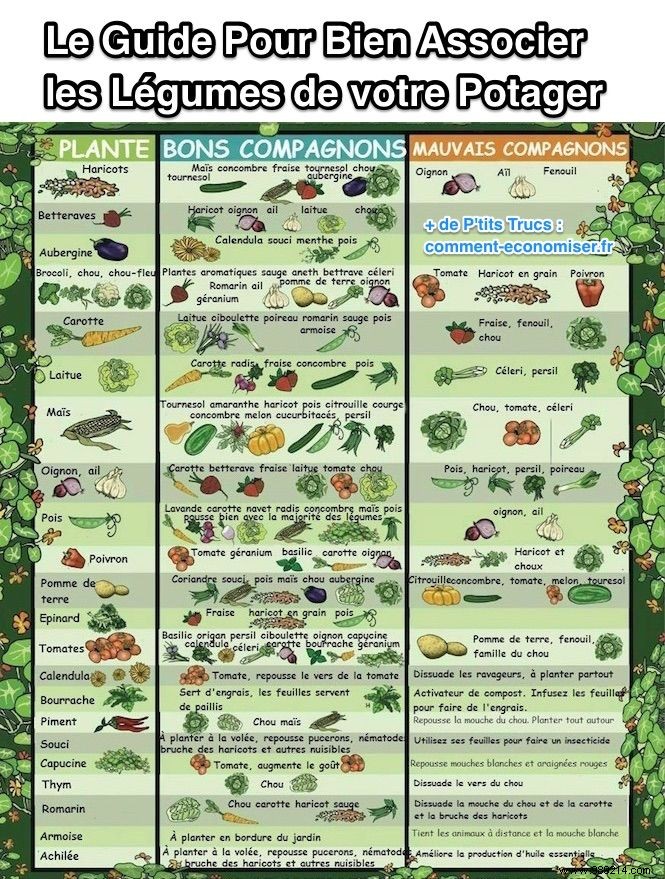
It's only the beginning of spring.
Yet many people are beginning to feel the call of this season in the air.
The snow is melting, the birds are returning from their wintery exile, and eager gardeners will soon start tossing seeds in their gardens.
One of the best ways to ensure the health and vitality of your vegetables and aromatics is to surround them with plants that complement them .
This technique is well known:it is called plant companionship.
The principle is that every plant needs vital nutrients, and also expels nutrients that are beneficial to other organisms.

When you plant herbs and vegetables in small rows properly, they are much less likely to thrive.
Why ? Because they are isolated and helpless against attacks from pests, for example.
Whereas if you plant them mixed with "friends", their health and growth will be boosted by their companions.

The best-known example of companionship is called:"the three sisters". Who are they ? corn, pole beans and squash :
- Corn grows tall. It provides climbing beans with a sort of natural trellis to hold on to.
- Beans, on the other hand, help to stabilize the corn, since corn roots are very shallow.
- Squash leaves provide a sort of mulch for beans and corn, as they retain moisture.
- Beans produce nitrogen in the soil, which corn and squash love. Pumpkin leaves are pungent and deter animals from stealing beans and corn.
This is all pretty cool, right? If only human brothers and sisters did the same...
Did you know that many plants form this kind of symbiotic relationship? By encouraging them in your own garden, you will achieve spectacular results.
Your vegetables will be healthier and tastier. You will find fewer pests ravaging your garden.
Besides, it's nice to see these different colors and textures of plants against each other instead of long strict straight rows.
You must first choose what you want to sow in your garden. Then, look at the plants that go well with the ones you've chosen.
While some vegetables and herbs grow very well together, others can be downright detrimental to each other.
Use this companion crop guide when planning your plantings.
You will be able to draw the plan of your garden, ensuring that each plant is well associated with its neighbors.
Here is a short list of the most common plants sown and their beneficial and harmful companions:
It goes very well with tomatoes. It will repel tomato worms and promote their growth.
It should not be grown near cabbage or snap beans , because it would reduce their growth and lower the yield. It doesn't get along well with sage either.
It goes well with cauliflower, broccoli, and other crucifers (like Brussels sprouts). But keep it away from fennel (as they hybridize with each other), and carrots.
It gets along well with tomatoes, carrots and even roses.
They get along well with most plants. But they hate everyone from the onion family (onions, chives, garlic), or beets.
It grows well with tomatoes, beans and cabbage. But you can't plant it near melons, cucumbers or squash.
Excellent near cabbage, beans, and carrots. But don't plant it near basil or your rosemary will die.
It gets along well with tomatoes, squash, beets, lettuce, and all those of the mint family.
But keep it away from the potato. They will cause each other to rot.
Perfect with all brassicaceae (cabbage family), as well as cucumbers and beans. But it should not be placed near the onions.
First decide which vegetables and herbs you like the most. Then see if they will grow in your area. Finally, check out this guide to pairing your plants:

It's important to take and keep notes so you can track the growth of your plants.
These notes are also essential, especially for planning your garden for the following year.
Indeed, crops must always rotate from one year to the next. This maximizes nutrient uptake (and therefore plant health).
Remember that some plants cannot be placed near their "enemies". They cannot therefore be placed in the ground where these plants grew the previous year.
Unless you have an infallible photographic memory and can remember what you planted and where you planted them, take notes and photos.
If you are interested in learning more about plant companionship, home food production or permaculture, here is a list of books.
Many of them should be available at your local library, or you can buy them online, by clicking on the links, and keep them for permanent reference:
- Permaculture:the guide to getting started
- Permaculture in practice:For your garden, your environment and the planet!
- Companion plants in the organic vegetable garden:The guide to associated crops
Have you used this guide to combine your vegetables for the vegetable garden? Let us know in the comments if it worked for you. We can't wait to read you!